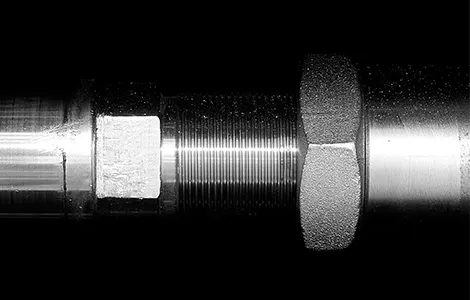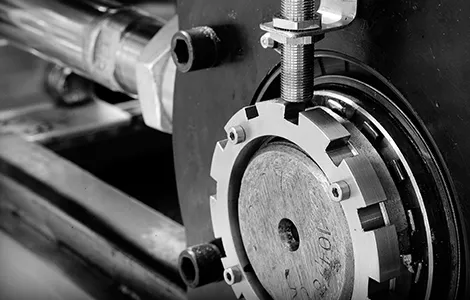The Science Behind Steel Belt Systems: Why Steel Outperforms Alternatives
March 04, 2025
Every industrial process relies on efficiency, but the material chosen for a conveyor belt system plays a defining role in determining its longevity, performance, and reliability. In industries ranging from food production to automotive manufacturing, steel belt systems have proven to be vastly superior to alternatives like rubber or plastic.
But what makes steel the gold standard for conveyor systems? The answer lies in its exceptional heat resistance, unparalleled tensile strength, and industry-leading durability. This blog explores why steel belts outclass other materials and how they translate into real world operational advantages.
Heat Resistance: The Backbone of High-Temperature Operations
Industrial environments often expose conveyor belts to extreme temperatures, and this is where steel's thermal stability comes in handy. Unlike plastic and rubber, which can warp, melt, or degrade when exposed to heat, stainless steel belts retain their structural integrity even under intense conditions.
Real-World Applications
- Baking & Food Processing: Whether handling fresh dough or molten chocolate, steel belts maintain precise heat distribution, ensuring consistent product quality.
- Chemical Processing: In industries requiring exposure to high temperatures or harsh substances, steel remains resilient where synthetic materials would fail.
- Industrial Furnaces & Cooling Lines: Steel’s ability to withstand rapid heating and cooling cycles without cracking makes it indispensable for temperature-critical processes.
Tensile Strength: Handling Heavy Loads Without Compromise
When transporting materials, a conveyor belt must endure significant stress. Steel belts offer unmatched tensile strength, meaning they can handle heavier loads without stretching or deforming over time. This is a fundamental advantage over rubber and plastic, which often require frequent maintenance and tension adjustments to prevent sagging.
Durability & Longevity: Reducing Costs & Maximising Efficiency
Downtime caused by conveyor belt malfunctions can lead to significant production losses. Steel belts, well known for their resistance to corrosion, mechanical damage, and wear, require far less maintenance than rubber or plastic belts, translating into:
- Lower long-term costs: Fewer replacements and reduced downtime mean higher cost-efficiency.
- Minimal contamination risks: In food and pharmaceutical industries, steel’s non-porous surface prevents bacterial buildup, ensuring hygiene compliance.
- Sustainability: Unlike plastic belts that degrade and require disposal, steel belts can be recycled, aligning with modern sustainability goals.
Why Steel Outperforms Plastic & Rubber
While plastic and rubber belts may be sufficient for light-duty applications, they struggle in demanding industrial environments. Here's how they compare:
Factor | Steel Belts | Plastic/Rubber Belts |
Heat Resistance | Withstands extreme temperatures without deformation | Prone to warping and degradation under heat |
Tensile Strength | Handles heavy loads without stretching or breaking | Can stretch over time, requiring tension adjustments |
Durability | Resistant to corrosion, wear, and chemicals | Wears down faster, leading to frequent replacements |
Maintenance | Low maintenance, long lifespan | Higher maintenance costs due to wear and tear |
Environmental Impact | 100% recyclable, sustainable option | Often ends up in landfills after use |
Industries That Rely on Steel Belt Systems
Because of its superior properties, steel conveyor belt systems are the preferred choice across multiple industries:
- Food & Beverage – Used in baking, chocolate production, and cooling processes for its hygienic and heat-resistant qualities.
- Pharmaceuticals – Ensures contamination-free production with smooth, non-porous surfaces.
- Automotive & Heavy Industry – Handles metal parts, castings, and machinery with ease.
- Electronics Manufacturing – Provides stable transport for delicate components without risk of static interference.
What’s coming up for Steel Belt Systems?
As industries continue to prioritise efficiency, hygiene, and sustainability, the advantages of steel belt systems will only become more pronounced. The shift towards automation, IoT-enabled monitoring, and predictive maintenance will further enhance steel belts’ role in industrial processes.
For businesses looking to reduce maintenance costs, improve efficiency, and invest in a long-lasting conveyor system, steel remains the undisputed leader.
PACE provides high-performance steel conveyor solutions designed to maximise durability, efficiency, and sustainability. To learn more about how our steel belt systems can benefit your industry, contact our team today.

